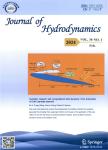STUDY OF THREE-DIMENSIONAL SEPARATION OF BOUNDARY LAYER OVER BLUNT BODIES
STUDY OF THREE-DIMENSIONAL SEPARATION OF BOUNDARY LAYER OVER BLUNT BODIES作者机构:Laboratoire de mécanique des fluides Université de ValenciennesAulnoy lez Valenciennes 59326 France Département de Mécanique Université de BiskraBiskra 07000 Algérie
出 版 物:《Journal of Hydrodynamics》 (水动力学研究与进展B辑(英文版))
年 卷 期:2009年第21卷第1期
页 面:100-107页
核心收录:
学科分类:080704[工学-流体机械及工程] 080103[工学-流体力学] 08[工学] 0807[工学-动力工程及工程热物理] 0801[工学-力学(可授工学、理学学位)]
主 题:three-dimensional flows separation boundary layers blunt bodies
摘 要:In the case of three-dimensional flows, the separation can be defined in more than one way. Discussions about three-dimensional boundary layer separation in the literature have found a rational extension of the zero skin friction. Attempts have been made to establish the identity of “separation lines. Among definitions, these may be found: (1) envelopes of limiting streamlines, (2) lines dividing flow which has come from different regions, (3) lines of singularities (problems of topology), (4) lines on which some component of the skin friction vanishes. Each of these is valid under certain conditions, but none is universally valid. In the present work, we use the definition (4), i.e. at low incidence of a blunt body the separation line is identified as the zero of the meridian skin friction component (Wang 1975). So the separation line on a flattened spheroid (6:3:1) at 6° of incidence is calculated, as well as experimentally determined by using the electrochemical method, which allows to follow the evolution of the parietal velocity gradient.



